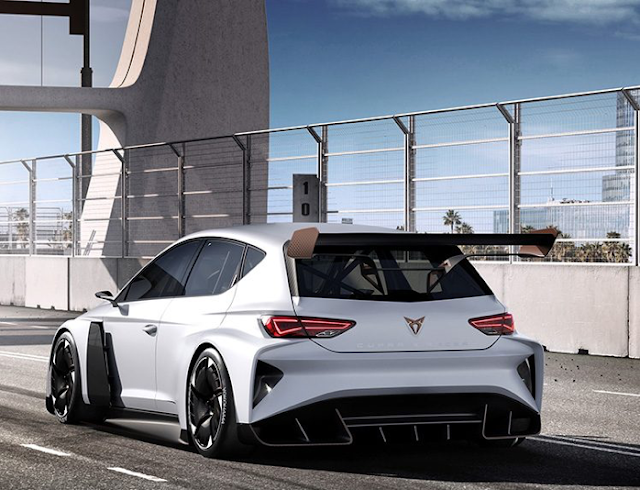SEAT's 670HP Cupra e-Racer is a Stunner!
SEAT, the Spanish car company owned by Volkswagen, has just premiered the first 100% electric touring race car in the world. In a worl...
https://automology.blogspot.com/2018/03/seats-670hp-cupra-e-racer-is-stunner.html
SEAT, the Spanish car company owned by Volkswagen, has just premiered the first 100% electric touring race car in the world.
In a world where Formula cars, Le Mans racers, hill climb specialists and even bikes have raced with some form of electric-enabled assistance, a fully electric touring race car was inevitable.
SEAT's newly formed performance sub-brand, Cupra, is similar to other marques’ racing arm, such as Mercedes’ AMG and BMW’s M division. This new subdivision will replace SEAT Sport, and continue SEAT’s motorsport legacy of 40 years.
The first car it will introduce at the 2018 Geneva Motor Show will be the 300hp sporty SUV called the Ateca.
Racing is part of the plan as well. Its e-Racer will kick out a maximum of 670 horses for short bursts, and a constant 402hp ready at all times. The Cupra e-Racer is based on the petrol-powered Cup Racer, but is much cleaner and environmentally friendlier, and quieter.

Courage, daring and determination of tribal civilisations inspired the design of the logo.
With a single-speed electric motor, the car is capable of doing 168 mph (270 km/h) flat out. 0-100 km/h is achieved in over 3.2 seconds. That’s supercar territory.
SEAT stresses that an electric motor is simpler, requires less maintenance and above all, is more efficient as it practically uses all of the supplied energy. A combustion engine only uses, at best, 30% of its fuel energy. Furthermore, kinetic energy is harnessed to recover power under braking and in deceleration phases.
SEAT points out that acceleration is much better as an electric car has its maximum torque available from the moment the accelerator is pressed; no longer is it necessary to reach a certain level of revolutions per minute in order to achieve maximum performance. For the same reason, a gearbox is no longer necessary.
The racer will have what SEAT calls ‘torque vectoring with rear wheel traction’. One thing it will not have is a rear-view mirror, which will be replaced by a three-camera system that gives the driver information on who he has left behind.













